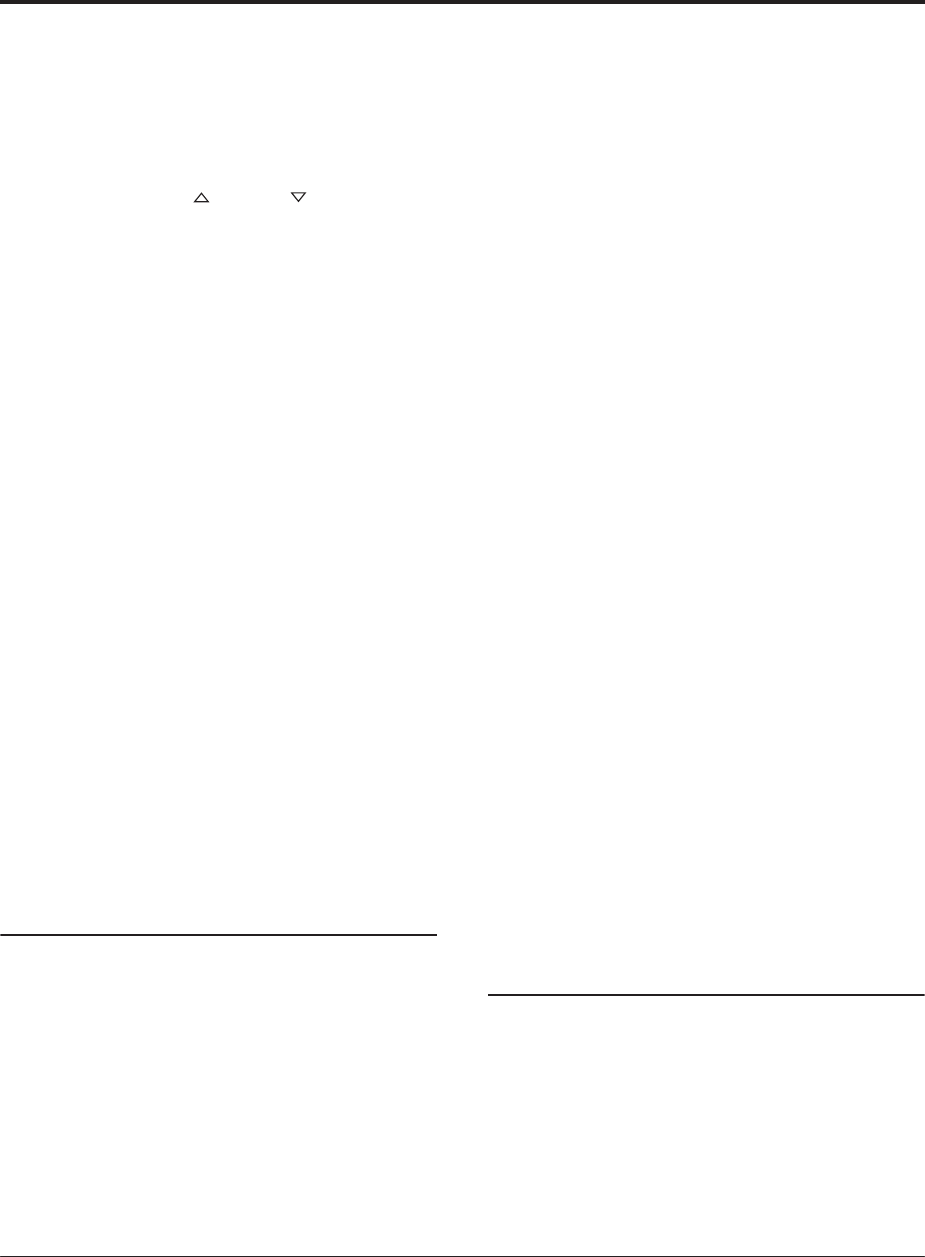
Program mode: EXi
156
You can select Banks either via the on-screen menu, or
by using the front-panel Bank buttons.
Program Select [000…127, Name]
This is name and number of the current Program.
When this parameter is selected, you can select
Programs using the Inc and Dec buttons,
numeric buttons 0-9, or the Value dial.
You can also use the pop-up Program and Category
menus to select Programs from the LCD. For more
details, please see “Program Select” on page 156
Note: On this page only, the VALUE slider functions as
a modulation source - which means that you can’t use
it to select Programs.
Favorite [Off, On]
This button marks the Program as a “favorite,” which
makes it easy to find in the Bank/Program Select and
Category/Program Select dialogs.
Note that you must write the Program in order to save
changes to this setting.
(Tempo) [040.00…240.00, EXT]
This is the tempo for the current Program, which
applies to KARMA, tempo-synced LFOs, Step
Sequencers, tempo-synced effects, and so on.
EXT means that the tempo will sync to external MIDI
clocks. You’ll see this if the Global MIDI page MIDI
Clock parameter is set to External MIDI, or if it’s set to
Auto and the OASYS is currently receiving MIDI
clocks. For more information, please see “MIDI Clock
(MIDI Clock Source)” on page 652.
040.00…240.00 allow you to set a specific tempo in
BPM, with 1/100 BPM accuracy. In addition to using
the standard data entry controls, you can also just turn
the TEMPO knob, or by playing a few quarter-notes on
the TAP TEMPO button.
0–1b: Overview and Page Jump
This section shows an overview of the most important
settings for the Program’s two EXi instruments, along
with some of the important Common parameters. The
specific parameters will vary, depending on which EXi
are being used. Parameters that you may see include
oscillator settings, filter settings, EGs, LFOs, step
sequencers, drawbar settings, and so on. See the
individual EXi documentation for details.
The graphics give you a quick way to check all of these
settings at a glance. They also let you jump instantly to
any of the displayed parameters. Just touch one of the
graphics, and you’ll jump to the page containing its
parameters. For instance, if you touch the Filter EG
graphic, you’ll go to the Filter EG page.
Common
The graphics along the right side of the screen show
the most important Common parameters, which are
shared by both EXi in the Program. This section will
always show the same parameters, regardless of which
EXi are being used.
Common Voice Assign Mode
This shows the voice assign mode of the Program–
either POLY or MONO.
Press this area to jump to the Program Basic page.
Common Step Sequencer
This shows a graphic overview of the Common Step
Sequencer.
Press this area to jump to the Common Step Sequencer
page.
Common LFO Graphic
This shows the waveform of the Common LFO.
Press this area to jump to the Common LFO page.
3 Band EQ Graphic
This shows the mid-sweepable 3-band EQ.
Press this area to jump to the EQ page.
IFX, MFX/TFX
Press the IFX area to jump to the IFX Routing page.
Press the MFX/TFX area to jump to the MFX Routing
page.
KARMA GE Name
This shows the name of the selected KARMA GE.
Press this area to jump to the GE Setup/Key Zones
page.
▼ 0–1: Page Menu Commands
The number before each command shows its ENTER +
number-key shortcut. For more information on these
shortcuts, see “ENTER + 0-9: shortcuts for menu
commands” on page 138.
• 0: Write Program. For more information, see “Write
Program” on page 138.
• 1: Exclusive Solo. For more information, see
“Exclusive Solo” on page 138.
0–6: KARMA GE
This page lets you make basic adjustments to KARMA.
It works exactly like the similar page for HD-1
Programs; for more information, see “0–6: KARMA
GE” on page 6.
For more detailed editing of KARMA parameters, see
“Program P7: KARMA” on page 98.


















